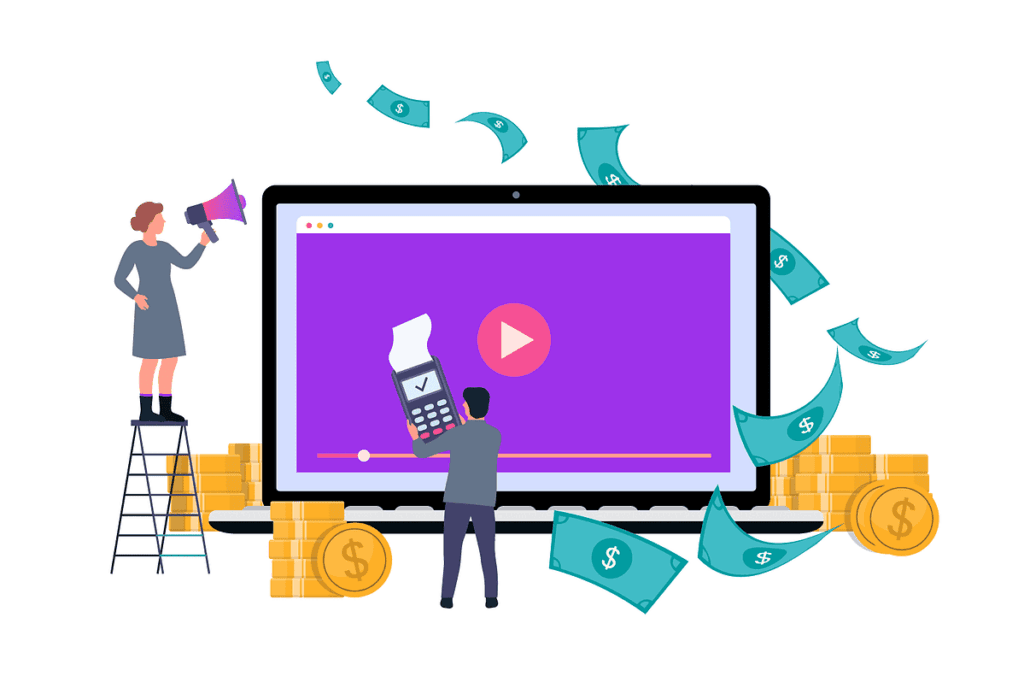If you’re looking up “how to monetize blog” on Google and you’re trying to figure out how you can monetize your WordPress website or blog, look no further!
A blog is a great way to share your thoughts and ideas with the world, but it’s also a great way to make some money.
In this post, we’ll be discussing how to monetize your blog in a variety of ways that can earn you active or passive income.
This includes ads, selling products or services, affiliate marketing, and more.
So whether you’re just starting out with a blog or you’ve been running an existing blog for a while, read on for some tips on how to make money from it!
Fundamentals of blogging
Before we get into how to monetize your blog, let’s go over some of the basics.
If you’re new to blogging, here are a few things you should know:
- A blog is a website where you can write about any topic you want.
- You can start a blog for free with platforms like WordPress.
- A blog is typically updated regularly with new posts and can be found at a URL that you choose (like yourname.com).
You can make your blog about anything you like.
Whether it’s to share your story, gain recognition for yourself or your business, join the blogging community, or another reason, it’s a great way to get your content out there.
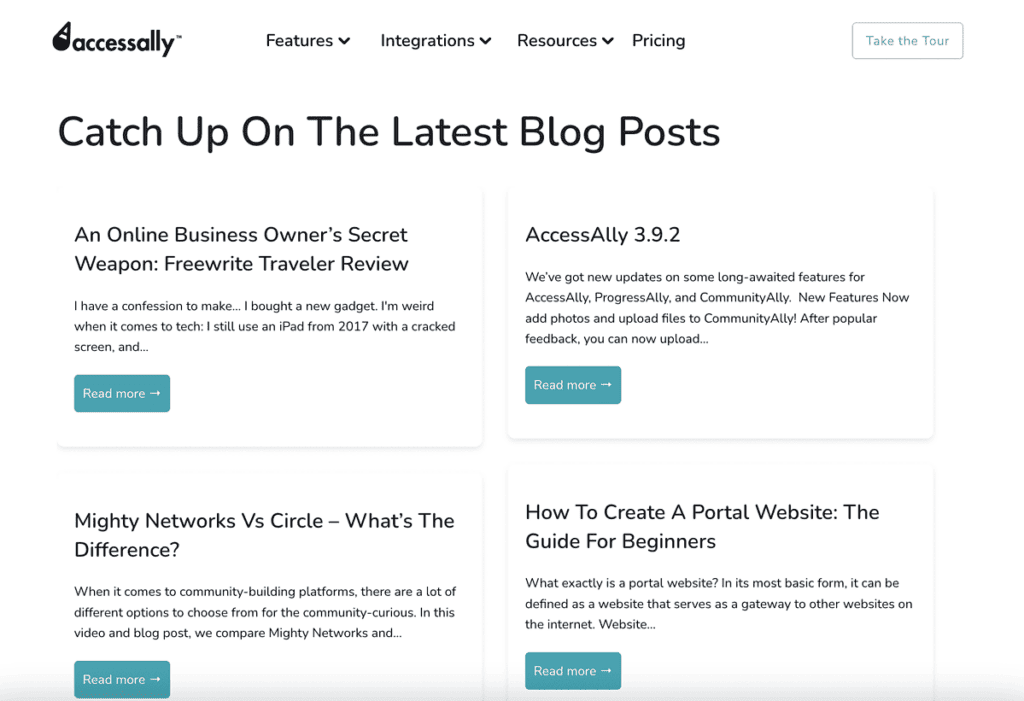

Most blogs have a comment section that allows you to interact with your audience. This lets you connect with your readers and potentially build trust.
You can also make money from your WordPress blog through ads, selling products or services, affiliate marketing, and more if you’re looking to earn money online.
By the way, if you’re finding the process to be a bit complex or if you need someone to help take some of the load off your plate, you might consider hiring a WordPress developer to help you out.
They can help you with everything from choosing a theme to setting up plugins, and can even help you with the intricacies of monetizing your WordPress website if you’re not sure how to get started.
What is monetization?
Monetization is the process of turning something that you own or have created into a source of income.
This can be done in a number of ways.
For example, you may monetize your blog by displaying ads on it, or by selling products or services through it.
Affiliate marketing is another form of monetization, where you promote other people’s products or services.


We’ll outline various methods for monetizing your blog below so that you can choose the ones that best suit your needs.
When should you start thinking about monetizing your blog?
At some point, lots of blog owners may think about how they can start making money with their blog.
To make money from your blog, you’ll need to grow your audience by writing interesting and engaging content.
Once you’ve got a good flow of blog traffic coming onto your website or a solid email list, and feel like you might have a successful online presence, it may be time to start thinking about monetizing your very own blog.
Established blogs are more successful in earning a decent income through monetization.
You may also think about monetizing your WordPress blog when you no longer feel the satisfaction of simply writing for fun and want to start earning an income from your blog.
There are a few methods that successful bloggers use as a part of their monetization strategy:
- Running advertisements
- Selling products
- Selling services
- Affiliate marketing
- Sponsored posts
- Running a virtual summit
- Offering a paid subscription plan
Once you have a large enough audience, there are several ways to monetize your blog, which we’ll get into below.
Ads
A common blog monetization strategy is to display ads on it. It’s a passive income stream.
There are various ad networks that you can sign up for, such as Google Adsense or Media.net.
Once you’ve signed up and been approved, you can then start displaying ads on your blog. These ad networks serve to connect advertisers with publishers.


The advertiser will pay the ad network, who will then give you a cut of the earnings.
The amount you earn per click on an ad can vary depending on the network, as well as how popular your blog is.
The revenue you make from ads will depend on how much traffic your blog gets as well as how much the advertiser is willing to pay per click or impression.
If you have higher traffic, then you’re more likely to succeed in making ad revenue because you’ll have more clicks.
You can also try to get direct advertisers, who will pay you a set amount to display their ad on your blog for a certain period of time.
The advantage of this is that you can negotiate the price directly with the advertiser and cut out the middleman, so to speak.
The downside is that it can be more difficult to find direct advertisers.
Some people may not think that displaying ads is an effective way of making money online with your blog, but it is relatively quick and easy.
With ads, you don’t need to have your own product or service to offer, nor do you have to come up with a content marketing strategy—you’re passively promoting others’ goods and services.
However, it’s important to note that ad blockers will render this ineffective as you won’t be able to show ads to people using them.
The key to display advertising is optimal ad placement.
You don’t want to bombard your readers with too many ads, as that will make them leave.
Instead, try to place one or two ads in strategic places where they’re most likely to be seen and clicked on, such as in the sidebar or after a post.
This means not placing ads above the fold or in other areas where they will be easily missed.
You can even use a free plugin to help you get your ads more exposure, such as a WordPress plugin that helps with optimizing ad placements.
It’s also important not to have too many ads on your site as this can deter people from visiting it.
A good rule of thumb is to have no more than three ads on your site and to make sure they’re not all in the same place.
If you want to increase your chances of making money from your blog, then you should also consider other methods, such as selling products or services, affiliate marketing, or sponsored posts.
An aside on Google Adsense
Google Adsense is a program that allows you to place ads on your website or blog and get paid each time someone clicks on them.
In order to be approved for Google Adsense, your website or blog must have quality content that is relevant to the ads being displayed.
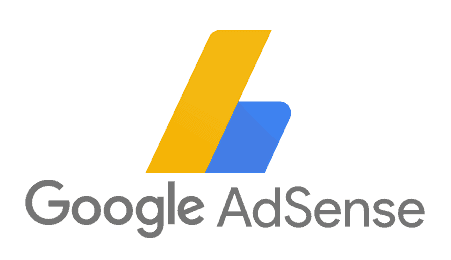

Your site must also get a decent amount of traffic for the ads to be effective.
Once you’ve been approved, you can then start placing ads on your site.
The revenue you make from Google Adsense depends on your blog traffic and how much the advertiser is willing to pay per click.
Google will take most of the money made from these banner ads, but you will still earn a commission on each click or impression.
Google Adsense can be a quick and easy way to monetize your blog.
Selling Products or Services
Another way to monetize your blog is by selling products or services through it.
This could be anything from e-books to courses to physical products.
If you have a product or service that you think would be of value to your readers, then selling it through your blog or WordPress site is a great way to monetize it.
Selling Courses
If you have some expertise that you think would be valuable to others, then you could sell courses through your WordPress blog.
This could be anything from a cooking course to a how-to guide on starting a business.
People are always looking for new and innovative ways to learn, so if you have something to teach, then selling courses is a good way to earn money online.


If you’re dead serious about delivering a refined course or program, may need to incorporate an online course platform or learning management system (LMS) such as AccessAlly to help you do this.
Coaching Programs or Consulting Services
Coaching programs and consulting services are another great way to monetize your blog and website and help you earn money online.
If you have experience in a particular area, then you could offer your services as a coach or consultant to help others achieve success.
This is a great option if you’re looking for one-on-one interaction with clients and customers.
You can use your blog as a platform to promote your coaching program or consulting service, then link to it from your website. Whether you run a hosted or self-hosted WordPress website, you can use an LMS or online course platform like AccessAlly to help you build a paid membership site and sell your online courses to better manage your offerings and program.


You can also offer group coaching programs or courses if you have the time and resources to do so.
This is also a good choice if you want to reach a larger audience and help more people achieve their goals.
E-Books
Selling eBooks is another great way to monetize your blog.
This is a digital product that can be delivered electronically, so there are no shipping or handling costs.


That’s the upside of being able to sell digital products.
You can write an eBook on just about any topic—as long as it’s something you’re knowledgeable about and passionate about—and then sell it on your blog or WordPress site.
This is a great way to offer exclusive content, take advantage of digital downloads, share your knowledge with others, and make some more money in the process.
Once you’ve written your eBook, you can promote it on your WordPress blog or website, social media platforms, and other channels.
You can also sell it through online retailers like Amazon Kindle Direct Publishing.
This is a great way to get your eBook in front of a larger audience and reach more potential buyers.
Another option for selling eBooks is to create a landing page on your website where people can buy the eBook directly from you.
This is a great way to build a closer relationship with your readers and create more loyalty among your audience.
It’s also a great way to increase sales and make more money from your blog or website.
Selling products
Selling products on your blog or website is another great way to monetize a blog or website.
This can be done through an online store or eCommerce store, such as Shopify, or by setting up a PayPal button that allows people to buy products directly from you.
The products can be physical or digital, depending on what you want to sell.


Note that running an eCommerce business may mean that you need to spend money before you make money.
Running your own online store means allocating money towards things like operation, marketing, product, and shipping costs. You may even need to hire and pay people as a part of your team if your online store demands it.
However, you can look for areas in which you can spend a little less.
For example, if you’re looking at WordPress websites, you can install a WordPress plugin like WooCommerce (which is free!) to get started.
When you start looking at more premium plugins (e.g., maybe you want a fancier eCommerce plugin with bells and whistles), though, you may find yourself spending a bit more.
Physical products are things like t-shirts, mugs, or other branded merchandise. These can be sold through an online store, such as Shopify, or through a third-party service, such as Amazon.


If you have a physical product that you want to sell, you can also use your blog or website to promote it.
Note that for physical products, you’ll need to deal with logistics and set up shipping and handling.
This can be quite a bit of work, but it can be worth it if you have a product that you’re passionate about and that you think people will want to buy.
On the other hand, if you sell eBooks, you sell digital products. Digital products are things like eBooks, courses, or other digital content. These can be sold through your website. For digital products, you can simply send people a link to where they can download the product.
You can also promote products through ads on your blog or website. This can be done through Google Adsense, Amazon Associates, or other ad networks.
Affiliate Marketing
Affiliate marketing is another popular way to monetize WordPress sites (and other sites as well). It earns you money online as a form of passive income, and the best affiliate marketers can earn quite a bit of extra money from this.
This involves promoting other people’s products or services on your blog and earning a commission for every sale that you make.
In other words, companies pay affiliates with a slice of the pie whenever they help in making a sale.


Some people like this because it’s a form of passive income (money earned without having to do much work).
Some people are nervous about affiliate marketing as they may associate a sense of bias with the product.
This is because affiliates make money when a customer carries through with a purchase, so they may think that they will push the sale even if they can’t truly vouch for the product.
It’s a good rule of thumb to let the reader of your blog know that there are affiliate links in the content and to disclose that you may earn money if they make a purchase after clicking on one of your links.
When you become an affiliate marketer, you’ll likely get an affiliate code or an affiliate link to put on your blog or site.
An affiliate code is a tracking code that is unique to you and allows the affiliate program to track how many sales come from your blog or site.
A customer typically receives a discount or some other benefit from using your affiliate code at checkout.
You would place affiliate links on your WordPress blog or site, typically as a hyperlink within your blog or site content. These are also unique to you and allow for tracking.
Every time someone checks out with your affiliate code or clicks on an affiliate link, you’ll earn a commission.
Being an affiliate is a good way of making money online because you’re essentially selling someone else’s product or service and you don’t need to create anything yourself.
You can simply promote other people’s products and services and earn a commission for every sale that you make.
It can be a good way to complement the revenue you make from ads on your blog.
To find affiliate programs, you can search for them online or contact the companies directly.
Affiliate networks are also a great way to connect with companies and find programs.
Be sure to look for an affiliate program that is relevant to the content of your blog, and that you think would be appealing to your readers.
As part of your affiliate marketing strategy, you can also promote products and services that you’re using and love yourself as a way of monetizing your WordPress site.
Sponsored Posts
Sponsored content is another form of advertising where a company pays you to write a post or review about their product or service on your blog.
This is a great way to monetize your blog or WordPress site if you have a large readership.
You’ll be able to have more success in going this route if you have high credibility and, as aforementioned, high traffic to your blog.
To find a sponsored post, you can search for them online or contact the companies directly.
A sponsorship deal is usually negotiable, so don’t be afraid to ask for what you think your post is worth.
However, a big part of sponsored content is your online presence. To negotiate or earn considerable revenue from this route, it would help to be known or have lots of visitors to your blog.
Companies may reach out to you to review their product, but if your blog is doing really well, you can reach out to those in your niche and offer to write a review or sponsored post for them.
This is more effective when you’re already using their products or services, because your review will then be more authentic.
Virtual Summits
This is a newer way to make money with your blog and one that’s still being perfected.
Virtual summits are a great way to monetize your blog because you can charge people to attend and access the content.
What’s a virtual summit?


A virtual summit is an online conference where various industry experts come together to teach a certain topic.
Typically, there is one main expert who pulls together the other experts for the summit.
Virtual summits can last anywhere from a day to a week and are usually packed with value.
Attendees can expect to learn a lot and walk away with actionable steps that they can take to improve their business or blog.
How can I host a virtual summit or be part of one?
As the host of a virtual summit, you would be responsible for promoting the event, getting speakers on board, and providing content for the attendees.
You can also be a part of a virtual summit by being a speaker. This is a great way to get your name and brand out there, as well as generate leads for your business.
If you’re interested in hosting or being a part of a virtual summit, reach out to the person who’s hosting it or look for events that are looking for speakers.
To put on a virtual summit, you need to have an audience that would be interested in attending and learning from the experts that you bring on board.
Virtual summits are a great way to monetize your blog if you already have an engaged audience.
Hosting a summit requires quite a bit of work as you need to promote the event, get sponsors, and line up guest speakers. However, it can be a great way to monetize your blog if done correctly.
Social media marketing can be used as a means to promote your virtual summit, increasing your reach and potentially growing the number of attendees for your summit.
If you run a membership site, you could promote your summit to your students if there is a common point of interest between your course content and your summit content, such as if they want to learn more about a certain topic.
Running a virtual summit is a great way of making money as well as generating exposure for your brand and blog.
It also can allow you to interact and network with many bloggers or other people with an Internet presence.
Paid Subscription Plan
This is one of the most common ways to monetize a blog. You can create exclusive content that’s only available to people who subscribe to your site.
This could be an eBook on a specific topic, a video series that goes more in-depth than what’s available on YouTube, or even just extra blog posts each week.
Some sites make money by monetizing access to exclusive articles. This type of content could be an interview with an expert in your industry, how-to guides, an informative post, or even just a list of resources that your readers can use.
This is a great way to monetize your blog if you already have a loyal following of those who are interested in the content that you create.
When it comes to monetizing your blog with a paid subscription plan, it’s important to create content that people are actually willing to pay for.
This could be something that’s very specific or niche, or content that’s high quality and not available anywhere else.
Some people may even call their content “premium content” to make it more compelling (the power of words!).
If you’re not sure what type of content to create, consider surveying your audience or looking at what other bloggers in your niche are doing.
This can give you some ideas of the types of things that people are willing to pay for.
Getting started with paid subscription plans
WordPress has plugins that can help you set up a subscription plan, or you can use a service like Patreon.
Since paid subscription plans are a form of recurring revenue, you may need to set up a billing system like PayPal or Stripe.
To set up a subscription plan, you need to first create the content that people will be paying for. Once you have that, you can then choose a plugin or service to help you set up the subscription process.
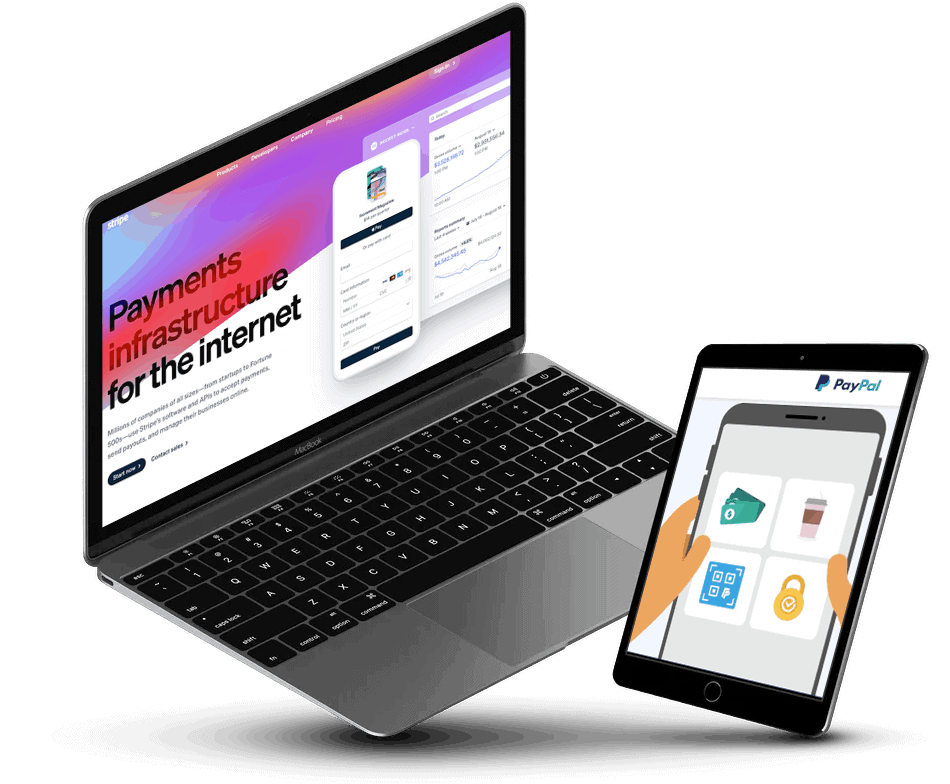

What’s in it?
It’s also important to make sure that you’re providing value for the price that you’re charging. If not, people will likely not be willing to pay for your content.
Your content can be about anything, but you also need to make sure that the content you create is high quality and worth the price that you’re charging.
It’s important to do a little market research to determine how much people are willing to pay for content like yours, as well as what type of content they’re looking for.
You can use sites like Google AdWords to research how much people are paying for keywords related to your niche and to see how your type of content fares online (as well as what competition you may have) with Google Search. You can also look at other membership sites in your industry to get an idea of how they structure their pricing.
Content delivery
Your content can be delivered in a number of ways, such as through email, a PDF, or even just by giving people access to a password-protected area of your website.
It’s important to make sure that your content is easy to consume and understand. No one wants to pay for something that’s difficult to read or watch.
You also need to make sure that your content is delivered in a timely manner. If you’re charging people for weekly content, then it needs to be delivered each week.
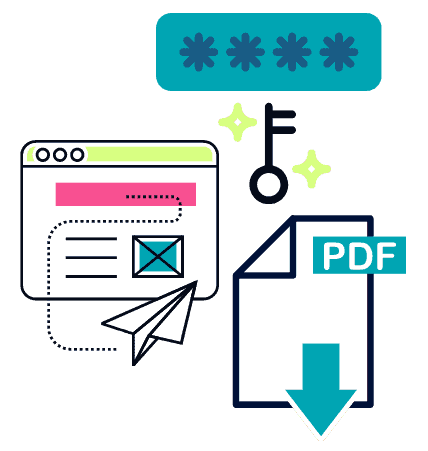

Plugins
It’s important to note that not all WordPress plugins are created equal. Some are more reliable than others, so it’s important to do your research before choosing one.
For example, you could look into setting up membership WordPress sites if the content you want to offer makes sense as a course offering.
If you want to sell online courses, you might want to consider learning management system plugins or platforms like AccessAlly, which are made for WordPress.
This can be a convenient option if you already have your own WordPress site. If you don’t, you may need to install WordPress and set it all up if you’re looking into membership sites to house your premium content. This is just one example of how you may want to use plugins.
Other plugins you may need to set up a subscription process on your WordPress site include:


- A payment gateway plugin like Stripe or PayPal
- An email marketing service like MailChimp
- A CRM like Salesforce
- Other plugins like Gravity Forms (to manage and create forms)
And if you’re looking to stack ways to make money, you might want an eCommerce plugin to include another form of blog monetization in your business.
It’s important to install and set up these plugins correctly, or you may run into billing issues later on.
You also want to make sure that your site is secure, so choose plugins that are well-reviewed and come from a reputable source.
Pricing for your paid subscription plan
When it comes to how much to charge, it really depends on the quality and quantity of content you’re offering.
You also need to make sure that you’re providing enough value to justify the price you’re charging.
If you’re just starting out, you may want to consider a lower price point to attract customers. You can always raise your prices later on once you have more content and are generating more revenue.
It’s important to note that you don’t have to charge the same price for everyone.
You can offer different tiers of content, such as basic, premium, and VIP levels. This allows you to provide different levels of content and service for different prices.
For example, the basic level could include access to your blog posts, while the premium level could include access to exclusive content, such as eBooks, video content, and more.
The VIP level could include all of the above, plus access to you as a coach or mentor, exclusive discounts, and more.
It’s important to find a balance between what you’re offering and how much you’re charging. You don’t want to undercharge and leave money on the table, but you also don’t want to overcharge and deter people from signing up.
Finding the right balance may take some trial and error, but it’s important to start somewhere.
Once you have a few paying customers, you can always adjust your prices based on feedback and how well your paid content is selling.
Before starting with your pricing and before deciding to feel it out as described above, it would be wise to do market research.
You want to make sure that you’re in line with what other people in your industry are charging for similar content and services.
This will give you a good starting point so you don’t price yourself too high or too low.
Accept donations
Another way to monetize your blog is by accepting donations.
This can be done through a donation button or link on your website.
You can also set up a subscription process where people can donate monthly to support your work.
Donations are a great way to monetize your blog if you don’t want to charge for your content or if you want to offer your content for free but still make money from your blog.
This can be a great option if you’re just starting out or if you have a small following.
It’s also a nice way to show your appreciation to those who support your work.
There are a variety of different payment mechanisms you can use to accept donations.
The most popular option is PayPal, but there are also other options, such as Patreon, Amazon Payments, and more.
If you don’t mind doing some donation management and setup on your own, and you run a WordPress website, you can use WordPress plugins to accept donations on your site.
It’s important to choose a payment method that’s easy to use and that your audience is familiar with.
You also want to make sure that the payment process is secure so that people feel comfortable donating to your blog.
You can even set up recurring donations with some payment methods, so people can choose to donate monthly or on a one-time basis.
This can be a great way to monetize your blog if you have a loyal following of readers who are willing to support your work.
Freelance Writing
If you’re a good writer, you can monetize your blogging skills and make money by offering your writing services to others.
This is a great way to make money from your blog if you have a lot of experience and expertise in a particular subject or industry.
You can offer your writing services to companies, businesses, and other bloggers who need content.
You can also offer your services to people who need help with their resumes, cover letters, and other personal writing.
If you have a knack for writing, this can be a great way to make money from your blog.


How can I get started?
Businesses are always looking for people who can create content to boost their marketing efforts.
And since you already have a blog, you have a head start on most people.
If you’re interested in offering your writing services to businesses, the best way to get started is by sending out some pitches.
You can find businesses that need content by searching online or by checking out job boards.
Once you find a few businesses that you think you could write for, send them a short pitch explaining why you’re the perfect person for the job.
To get started, you can create a portfolio of your work and list your services on your blog. A good portfolio can help increase your chances of getting hired.
How can I get the word out there?
You can also promote your services on social media and in other online communities.
If you have a large following, you can even create an email list of people who need your writing services.
A few other ways to promote your writing services include creating a landing page, writing guest posts for other blogs, and participating in online forums.
No matter how you choose to promote your services, make sure you’re clear about what you offer and how much you charge.
This will help ensure that you attract the right clients and that you get paid what you’re worth.
Overall, this is a great way to monetize your blog and make money from your writing skills.
SEO + Inbound marketing
You can take advantage of search engines, SEO and inbound marketing to help you get your name out there in terms of freelance writing (it can also lead people to your blog so you get more traffic).
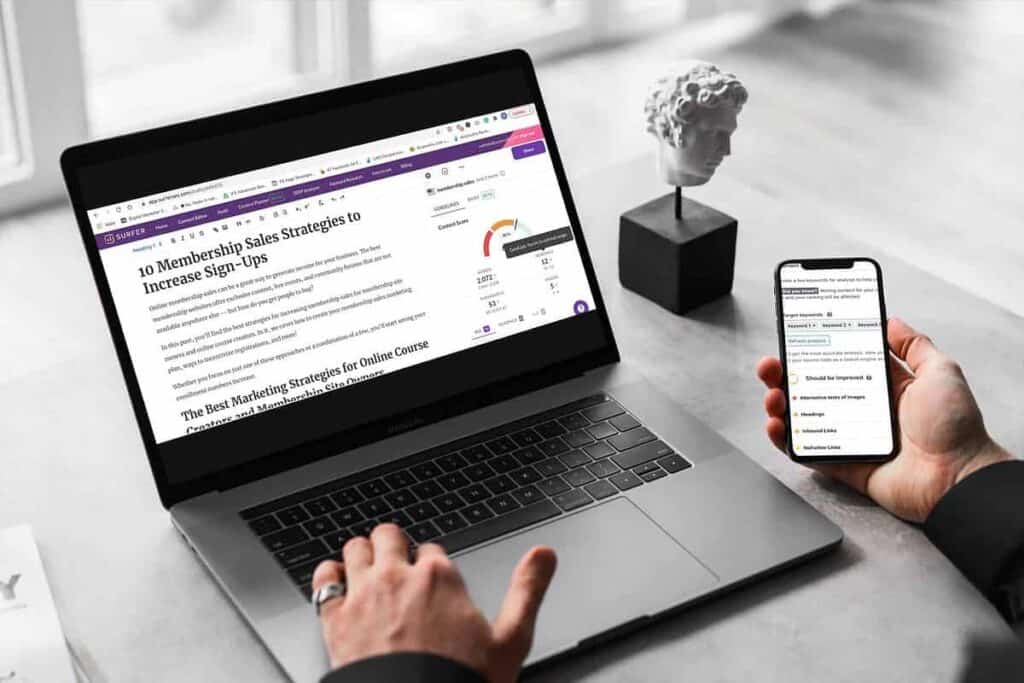

In order to do this, make sure you’re using the right keywords in your content so that people can find you when they search for things related to your niche.
SEO requires some research on your part to find the right keywords, but it’s worth it if you can get more traffic and views to your blog or website.
In addition, inbound marketing is all about creating helpful, informative content that will attract people to your site.
Starting a podcast
Another great way to monetize your blog is by starting a podcast.
This is a great option if you’re already creating content for your blog and if you have a lot to say on a particular subject.
Podcasts are becoming more and more popular, so this is a great way to reach a new audience and make money from your blog.
You can monetize your podcast by charging for episodes, running ads, or selling products and services.
If you have a large following, you can even get sponsorships from companies that want to reach your audience.
How can I get started?
Starting a podcast is easy and there are several ways to do it.
If you’re not sure what type of feel you want your podcast to have, hit the search engines, look up, and listen to other podcasts to get an understanding of other podcasts out there.
All you need is your recording software, a microphone, and an internet connection.
You can record your podcast episodes anywhere, whether you’re at home, in your car, or out and about.
Once you have your episodes recorded, you can upload them to a hosting site like Libsyn or Soundcloud.


Then, all you need to do is promote your podcast and wait for people to start listening.
What tools might I need if I want to start a podcast?
You’ll need a microphone and some recording software.
You can find microphones for as little as $30, and there are many different recording software options available for both Mac and PC.
Once you have your equipment set up, you can start recording your episodes.
You can use a simple recording program like Audacity or you can use a more sophisticated program like Garageband.
When you’re ready to launch your podcast, you’ll need to find a hosting platform.
There are many different podcast hosting platforms available, and some of them even offer free plans.
Once you’ve found a platform that you’re happy with, you can start publishing your episodes and promoting your show.
How can I get the word out there?
There are multiple ways to promote your podcast.
You can start by promoting it on your blog and your social media channels.
You can also submit your podcast to iTunes and other directories.
If you have a large following, you can even run ads on your podcast or get sponsorships from companies.
No matter how you choose to promote your podcast, make sure you’re clear about what you’re offering and how people can listen to your episodes.
This will help ensure that you attract the right audience and that you get the most out of your podcast.
Podcasts are a great way to monetize your WordPress website or blog and reach a new audience.
Just remember to promote your podcast and make it easy for people to find and listen to your episodes.
Creating and selling WordPress themes
If you’re a web designer or developer or have created WordPress themes for your blog that are nice enough to share with other WordPress blog owners, you can monetize your blog by creating and selling WordPress themes.
This is a great option if you’re already familiar with coding, and if you have an eye for design.
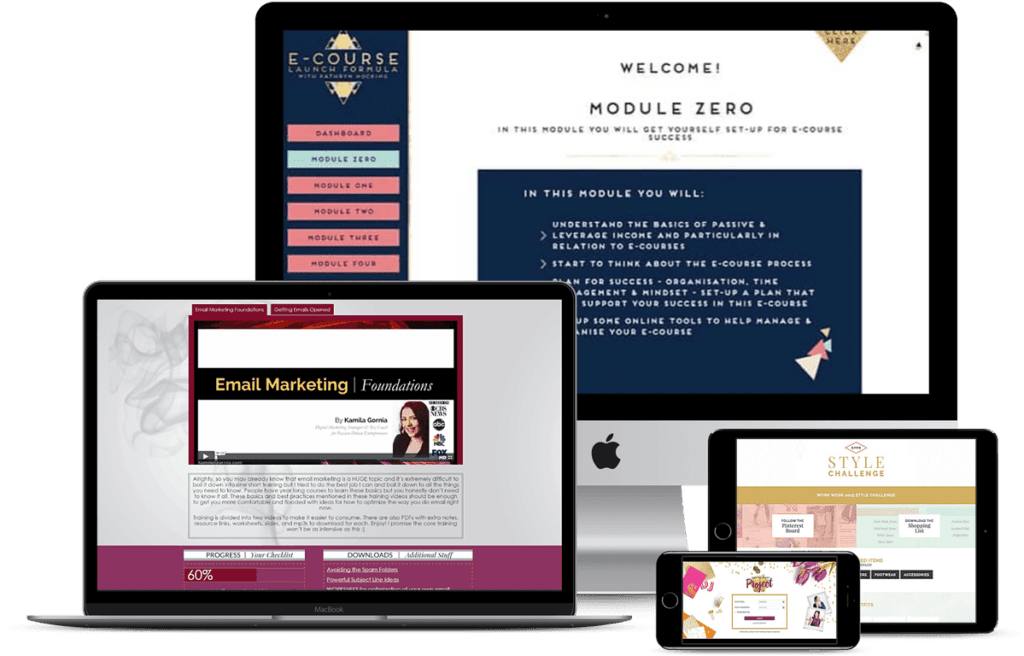

Creating a WordPress theme can take some time, but it’s worth it if you can sell it for a good price to people who have their own WordPress site.
There are a few places you can sell your WordPress themes, such as Themeforest and Creative Market.
When creating a WordPress theme, it’s important to make sure that it’s responsive and that it works well with all the major browsers. You don’t want someone to purchase your theme for their WordPress site and have them be unhappy with how it looks or how it works.
It’s also important to create a theme that is easy to use and customize so that people who purchase it can easily make it their own.
It should also be compatible with the latest version of WordPress.
If you can create a WordPress theme that meets all of these criteria, you’ll be able to sell it for a good price and monetize your blog.
All in all…
There are many different ways to monetize your blog.
The best way to do it is to find a method that works well for you and your blog and stick with it.
Whether you choose to sell products, run ads, or use affiliate marketing, make sure you’re clear about what you’re offering and how people can access it. By doing this, you’ll be able to monetize your blog successfully and reach a wider audience.
Do you know some other ways to monetize your blog? Let us know in the comments below!

